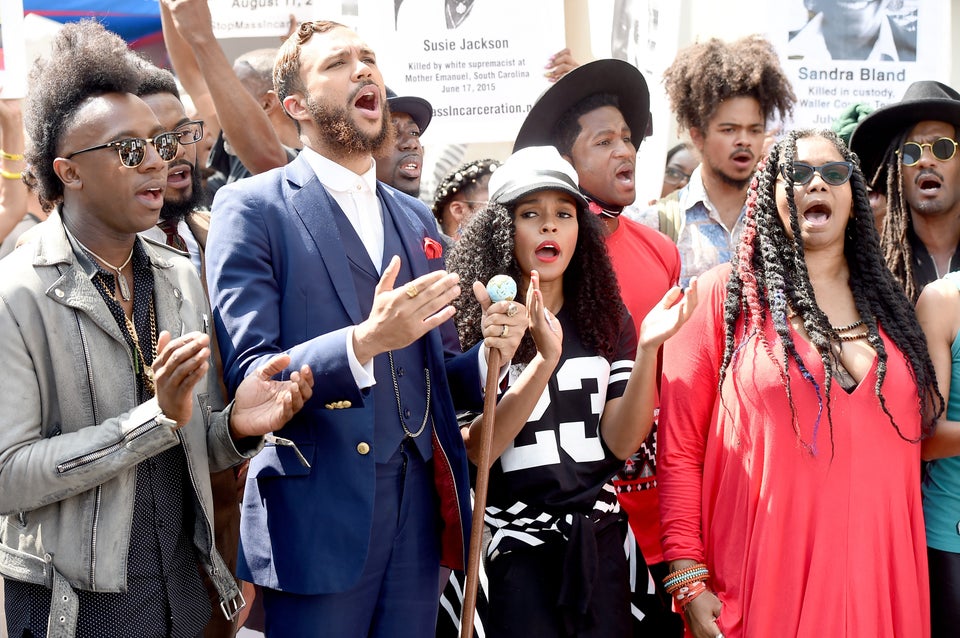
On Wednesday, Sept. 16, students of the University of Buffalo were shocked to find "White Only" and "Black Only" signs hung near campus bathrooms. Students were sickened and traumatized by the apparent act of racism; by 1 p.m., the police had received 11 phone calls regarding the signage.
It was later revealed, however, that the signs reminiscent of the Jim Crow era were put on display by graduate fine arts student Ashley Powell, who is black, as part of an art project.
Before Powell admitted to hanging the signs at a Black Student Union (BSU) meeting on Wednesday night, students and faculty were left wondering about the source of the racist designations. "We didn’t know it was an art project, it could’ve been an act of terrorism," a student explained to The Spectrum, the independent campus newspaper.
When Powell revealed that she was behind the act, a project for her "Installation: Urban Spaces" class, which requires students to install art in a public space, many students stormed out of the BSU assembly, some in tears. "It brought up feelings of a past that our generation has never seen, which I think is why it was so shocking for us to see," Micah Oliver, president of the BSU, told ABC.
"As an artist, I respect you as an artist," said student Jefry Taveras in the BSU meeting. "But you should know racism isn’t art, it’s a reality and traumatizing."
In a statement to The Spectrum, Powell explained the reasoning behind her installation, which addresses issues of non-white suffering and white privilege. "I apologize for the extreme trauma, fear, and actual hurt and pain these signs brought about," she wrote. "I apologize if you were hurt, but I do not apologize for what I did."
She went on to expand upon the motivations behind the project, which was intended to spark outrage and discomfort in viewers.
"My art practice is not an act of self-policing meant to hide my rage. Instead, it uses pain, narrative, and trauma as a medium of expression and as grounds for arguing a need for change in the first place. I understand that I forced people to feel pain that they otherwise would not have had to deal with in this magnitude. But I ask, should non-white people not express or confront their trauma? Should we be content with not having to confront that pain? We know it exists, and it often causes many of us immediate discomfort. Should we not be in a state of crushing discomfort?
These signs made you feel discomfort. They are tangible objects that forced you to revisit your past, to confront your present, and to recognize here and now the underlying social structures that are directly responsible for your pain and suffering. This project makes forceful what has been easy for you to ignore."
Read Powell's statement in full here.
University of Buffalo released the following statement regarding the incident: "After an initial investigation by University Police, it has been determined that the signs posted in Clemens Hall were part of a student art project. The University is continuing to review this matter through appropriate university policies and procedures."
Powell is far from the first artist to toe the fine line between critiquing racism and embodying it. Brett Bailey's "Exhibit B," a performance recreating the "human zoos" of the 19th century, Ti-Rock Moore's sculpture of Michael Brown's dead body, and Kenneth Goldsmith's poetic reading of Michael Brown's autopsy have all caused dire outrage. However, it should be mentioned that the three artists listed above are white.
"My practice wants to call you to action and force you to make a choice," Powell expressed in her statement. "I ask, why have these signs caused more outrage than the fact that over 800 people have been unjustly murdered by the police since the death of Michael Brown? Why does it take signs, and not the public and unlawful police gang rape of Charnesia Corley to cause one of, if not the biggest, turn out of the BSU ever? Why does it take these signs for students of different non-white organizations to finally and passionately verbalize a need for non-white solidarity?"
Do you think Powell's art project was an effective and provocative challenging of white privilege? Or did the artist go too far in exploiting a painful history for her artwork? Let us know your thoughts in the comments.
Also on HuffPost:

